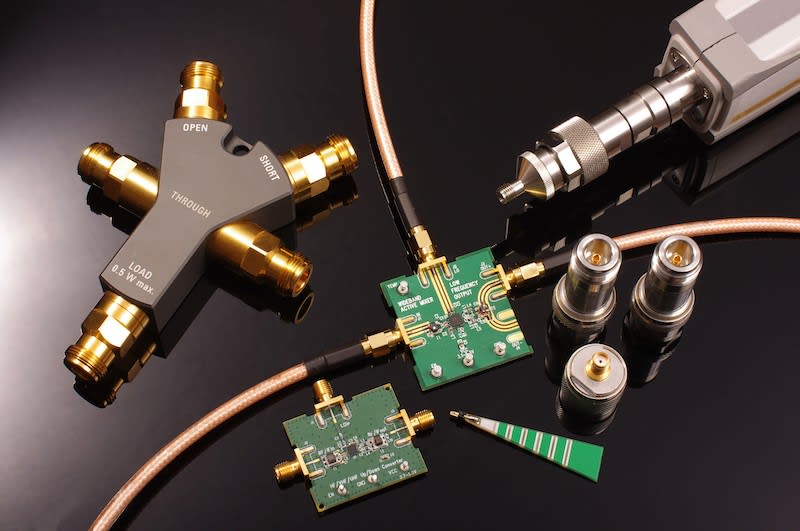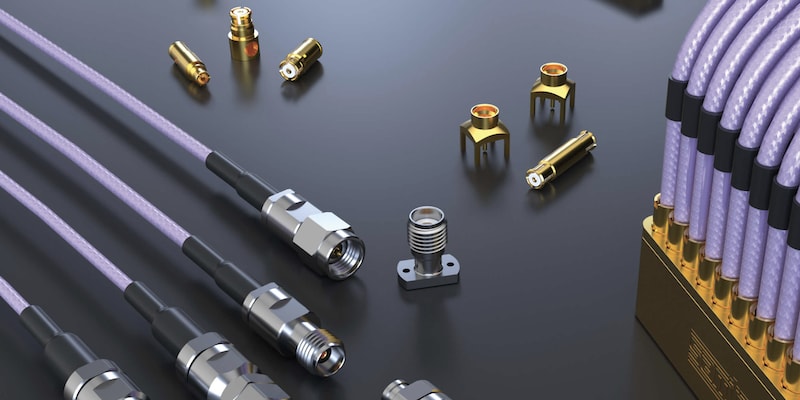An Exciting Time for Precision RF Connectors
Follow articleHow do you feel about this article? Help us to provide better content for you.
Thank you! Your feedback has been received.
There was a problem submitting your feedback, please try again later.
What do you think of this article?
In a world dominated by digital technology, it is easy to forget the importance of radio frequency (RF) transmission. Everything that transmits or receives its signals uses RF radiation to carry information. If you take a look at a chart of frequency allocations, it will be obvious that the environment is awash with a huge range of RF transmissions that are used for everything from communications and entertainment to navigation and astronomy.
Engineers use coaxial cables and connectors to transmit radio frequency signals over physical infrastructure. Coaxial cable consists of a single central conductor that is surrounded by an outer conductive sheath. The inner and outer conductors are separated by an insulator called a dielectric, and the dimensions between them are closely controlled to allow for efficient transmission of an RF signal.
Joining two coaxial cables together requires a connector that will maintain the precise characteristics of the coaxial cable in order to preserve the integrity of the signal that is propagated through it. Coaxial or RF connectors have been a familiar sight in the world of electronics for decades. The cable that joins your television with its aerial (or more recently, your set-top box to your satellite dish) uses a coaxial connector, and for many years Ethernet networks used BNC connectors for its physical infrastructure.
RF Critical For Modern Technology
In the modern era of 5G wireless internet, Bluetooth and Wi-Fi, it is rare to see a coaxial connector in use. All of these systems communicate using radio frequency radiation, however. Somewhere, the RF signal is being generated within a semiconductor and will need to be carried to an antenna before it reaches your smartphone. As the demand for high speed and high data rates grows, these RF signals are using higher and higher frequencies.
Connectors and cables must be capable of transmitting these high-speed signals efficiently, introducing the lowest possible losses in order for the data to reach its destination safely.
However, not all connectors are created to be equal, and engineers must choose the right connector for the task. Just as you can drive a 30-year-old clunker or the latest supercar, there are coaxial connectors that deliver vastly different performances. It would be unusual to use your supercar for the commute to work, nor would it be a good idea to enter a 24-hour endurance race with a clunker. The same is true for RF connectors.
Not Your Old RF Connector
The latest precision RF connectors are capable of transmitting signals with frequencies of 80 GHz or higher. While the introduction of 5G wireless communication still uses a relatively low frequency of 6-10 GHz, there are plenty of applications that require higher performance.
The scientific community has long used RF connectors for the collection of data, and this requirement remains strong. However, there are practical applications that are utilising the advances in this technology. Whether in the world of the smart city and vehicle-to-vehicle communications or the precision required in the latest phased array radar, high-speed signals are vital in providing low latency and processing of data.
For these demanding applications, the latest precision RF connectors deliver extremely high-speed performance. When dealing with RF signals approaching 100 GHz, tiny fractions of millimetres can be crucial. Therefore, in contrast to the mass-production techniques used for their low-cost equivalents, the latest precision RF connectors are machined to very close tolerances, using the best materials.
An Exciting Future
This is an exciting time for precision RF connectors. European manufacturers are highly active in this market, with names like Rosenberger and the 4.3-10 connector (136-7710) , Huber+Suhner with their QMA connector (612-7044) , and Radiall with the ever-popular SMA series (295-5889) . Other manufacturers are entering the market with some remarkably high-performance products such as Samtec and their latest SMP connector (123-6869) capable of frequencies up to 40GHz.
Over the next few months, we’ll be taking a closer look at the science behind precision RF connectors, with new products being introduced and an in-depth interview. Stay tuned to DesignSpark to get the latest on this high-performance range of products.




